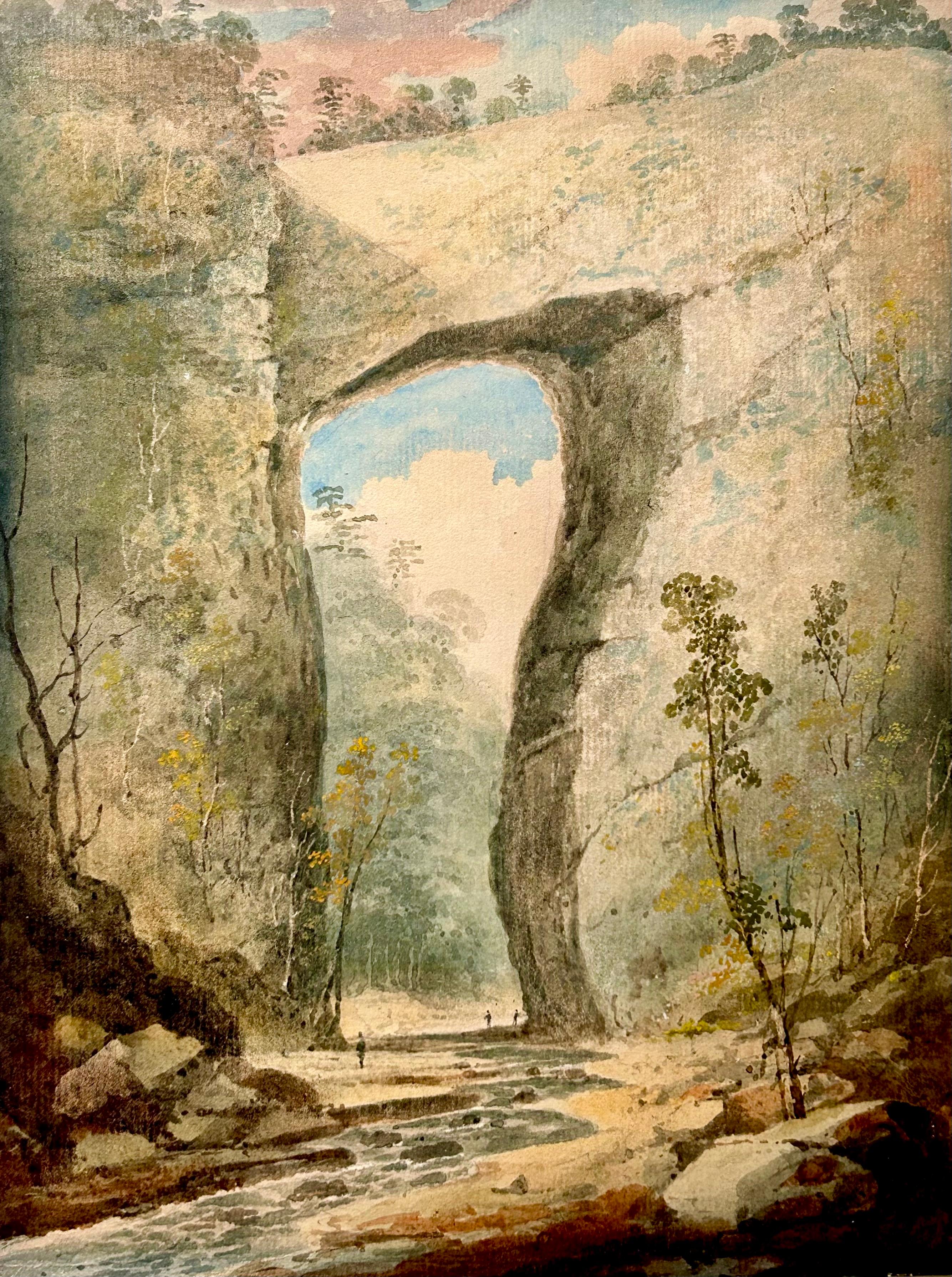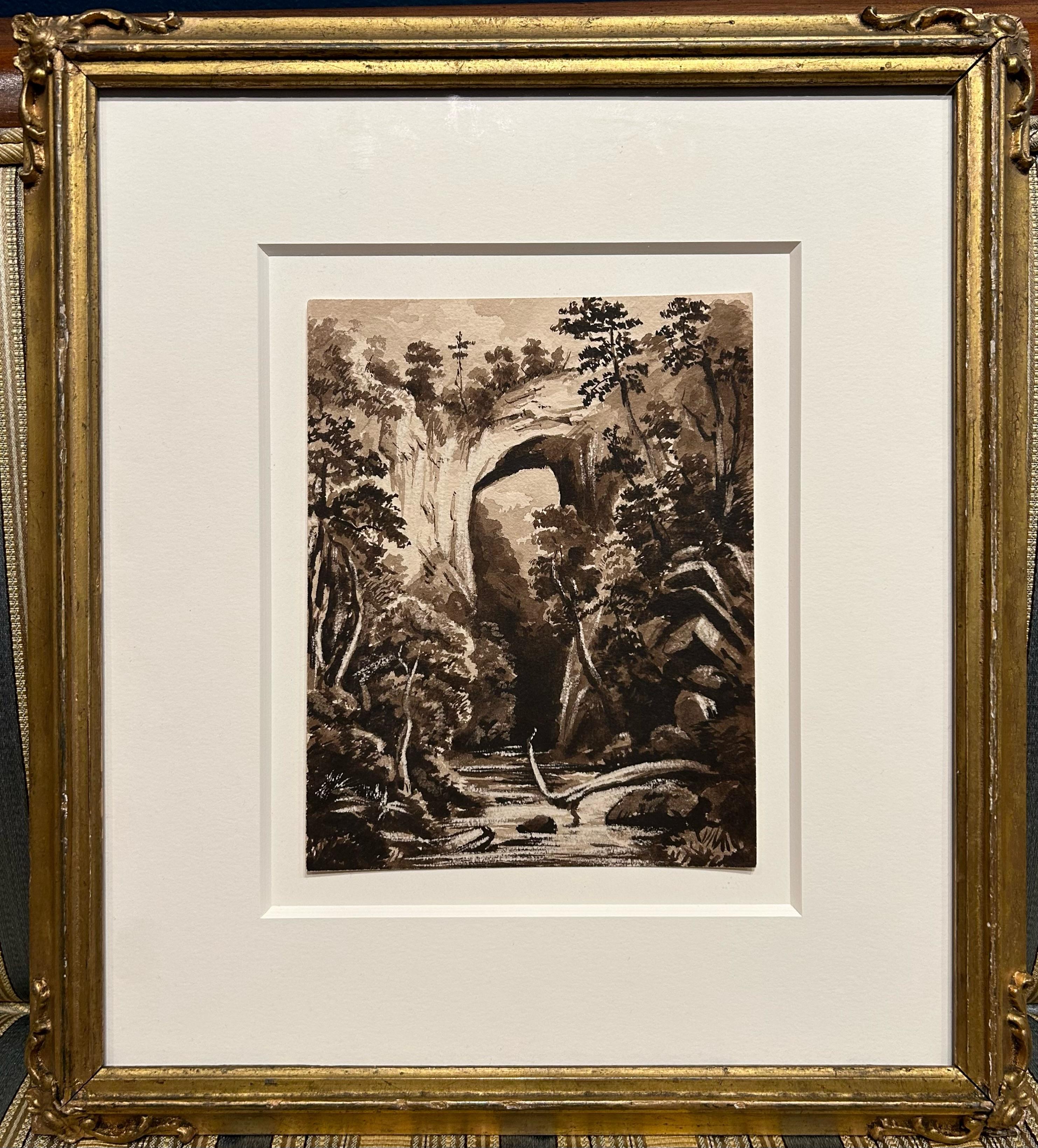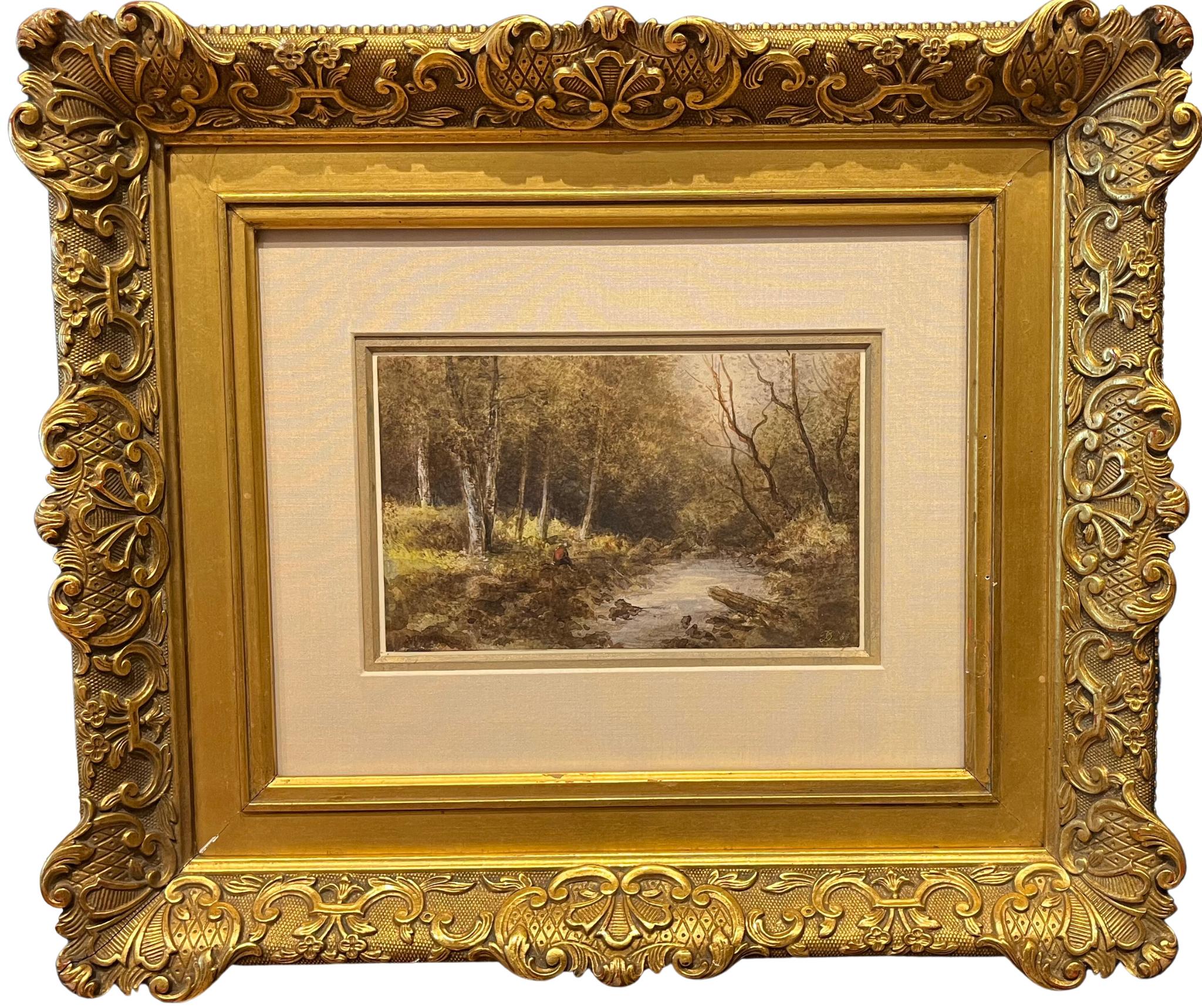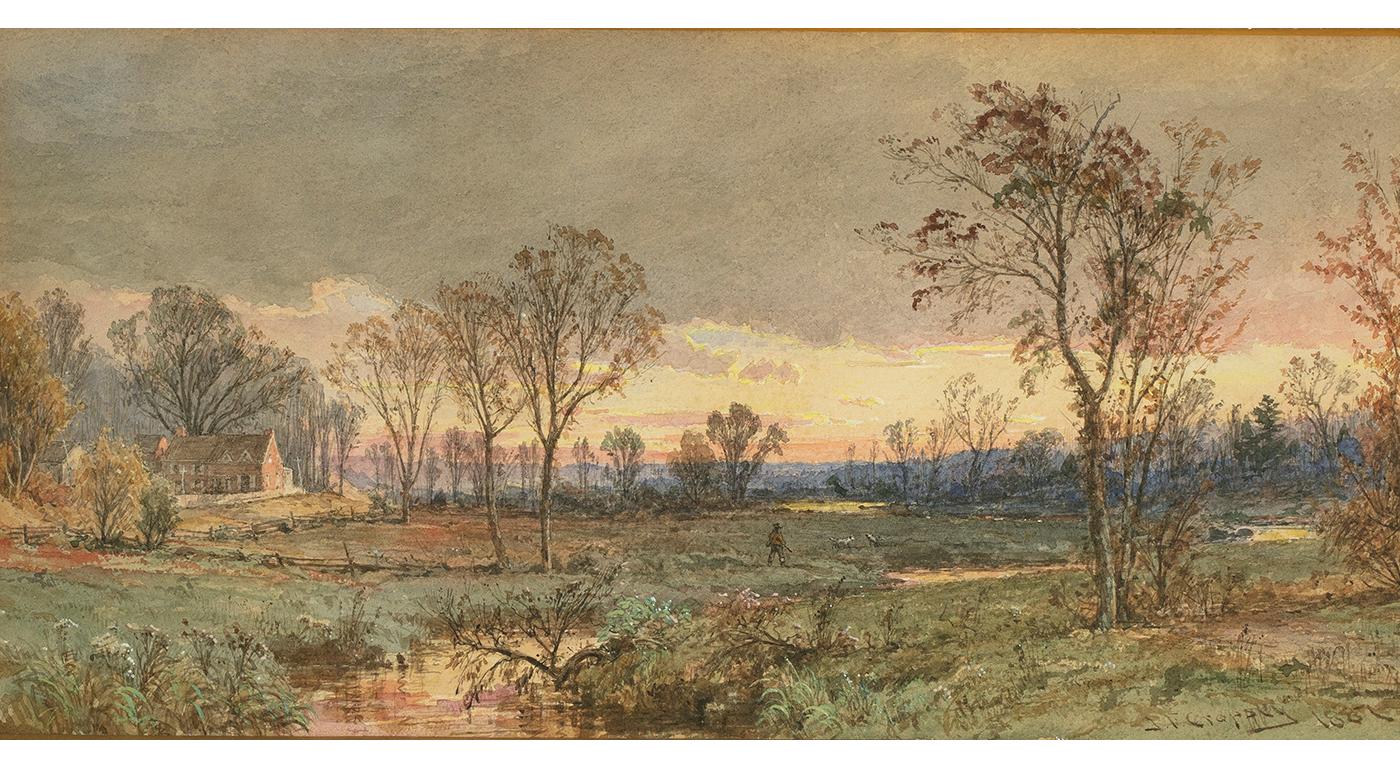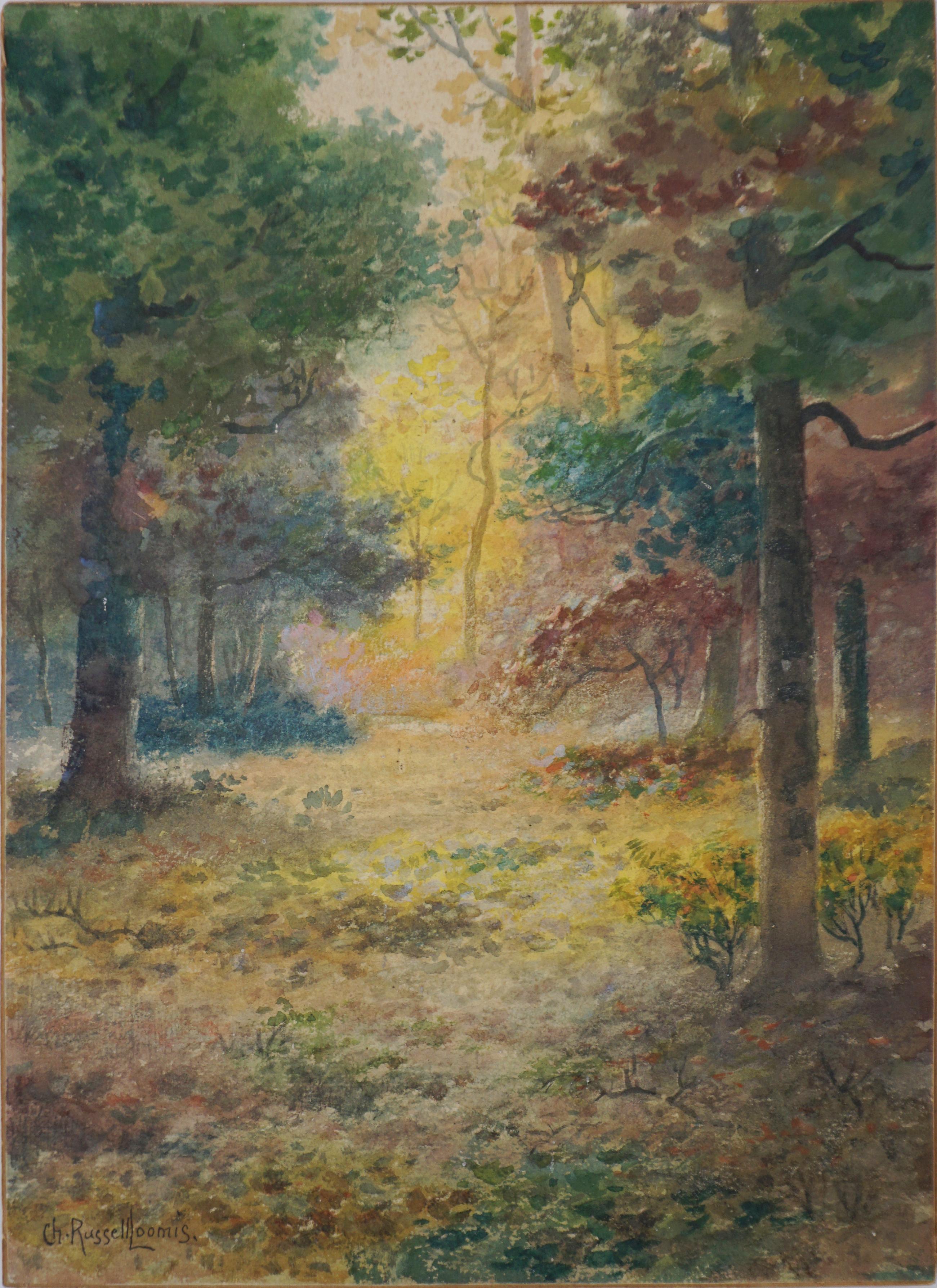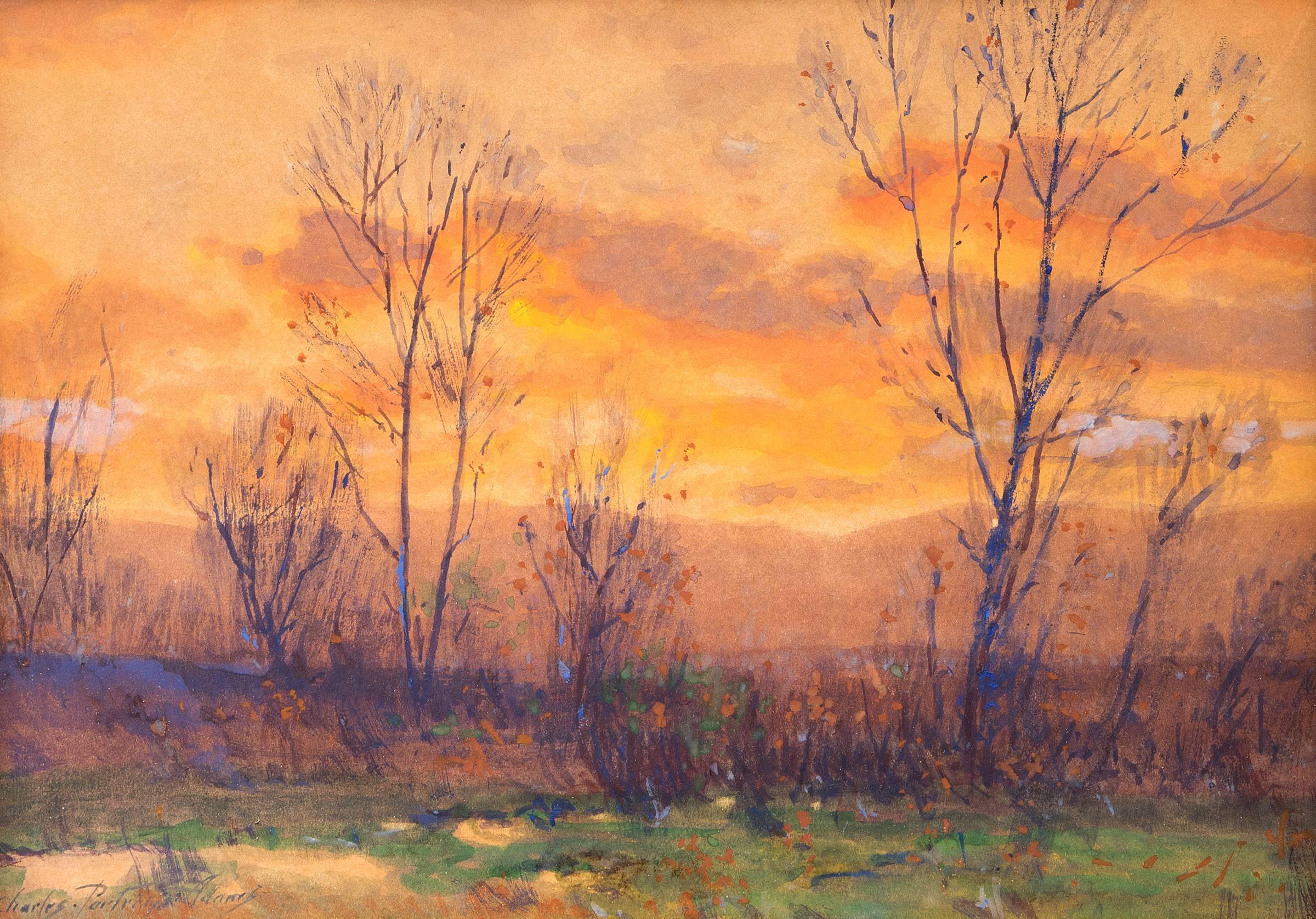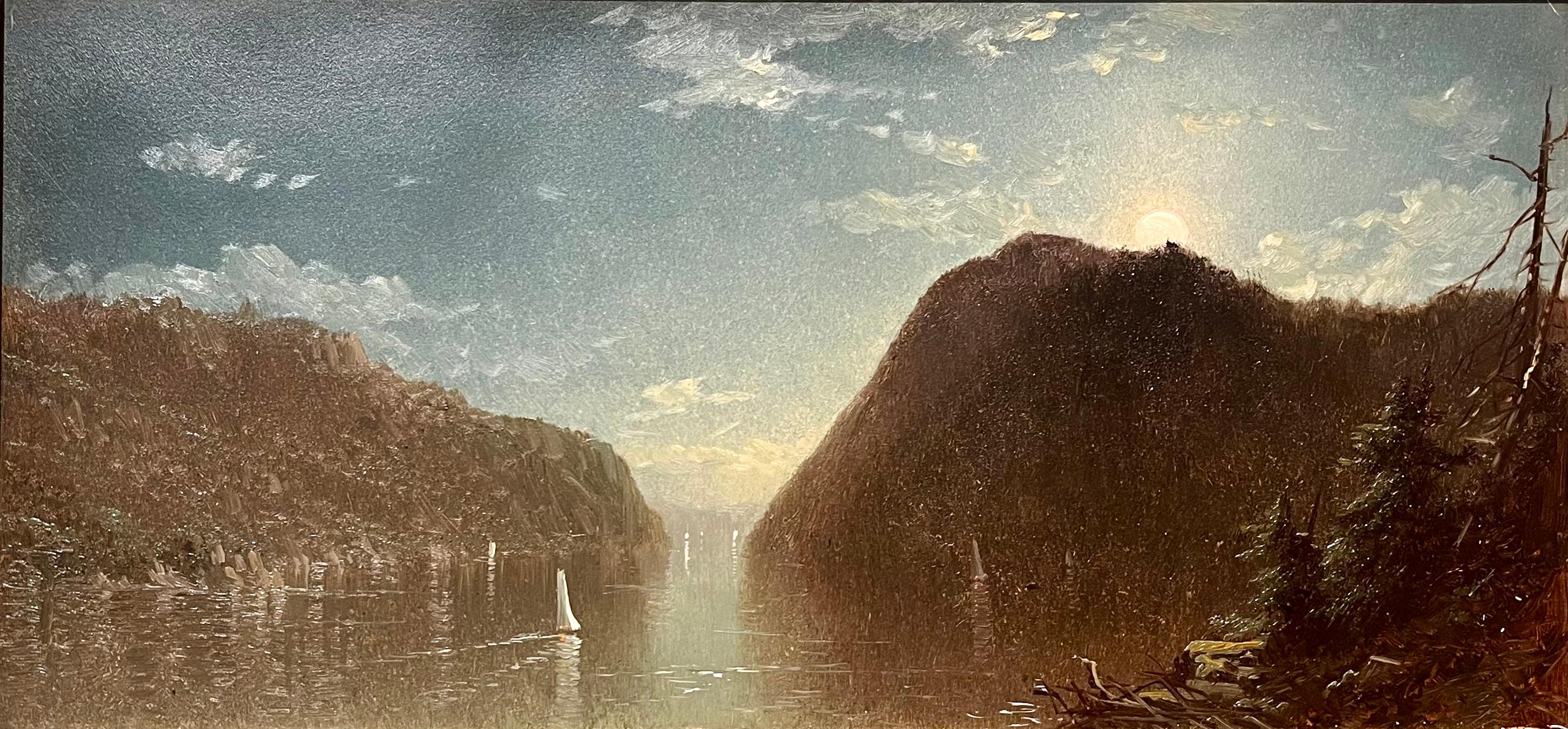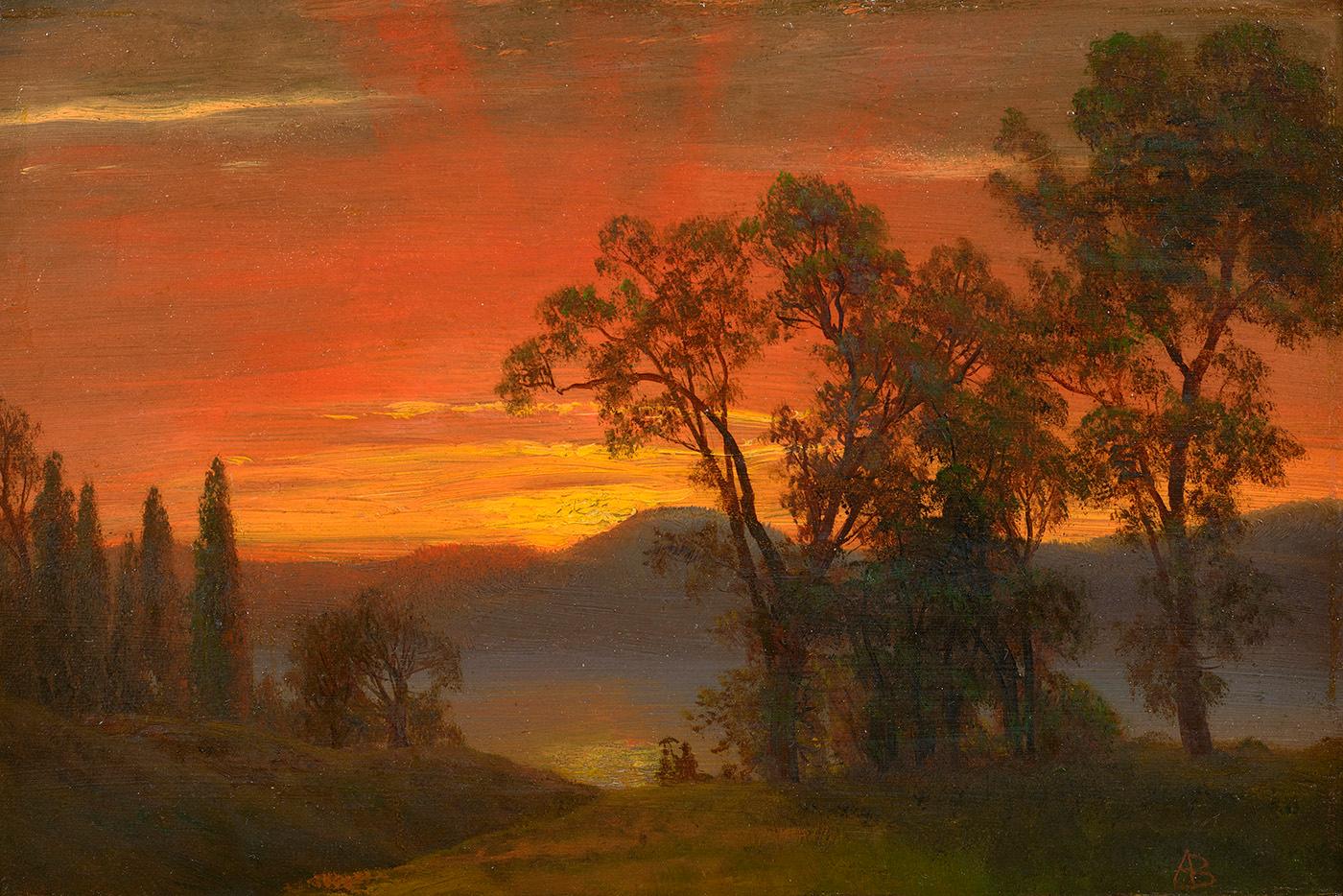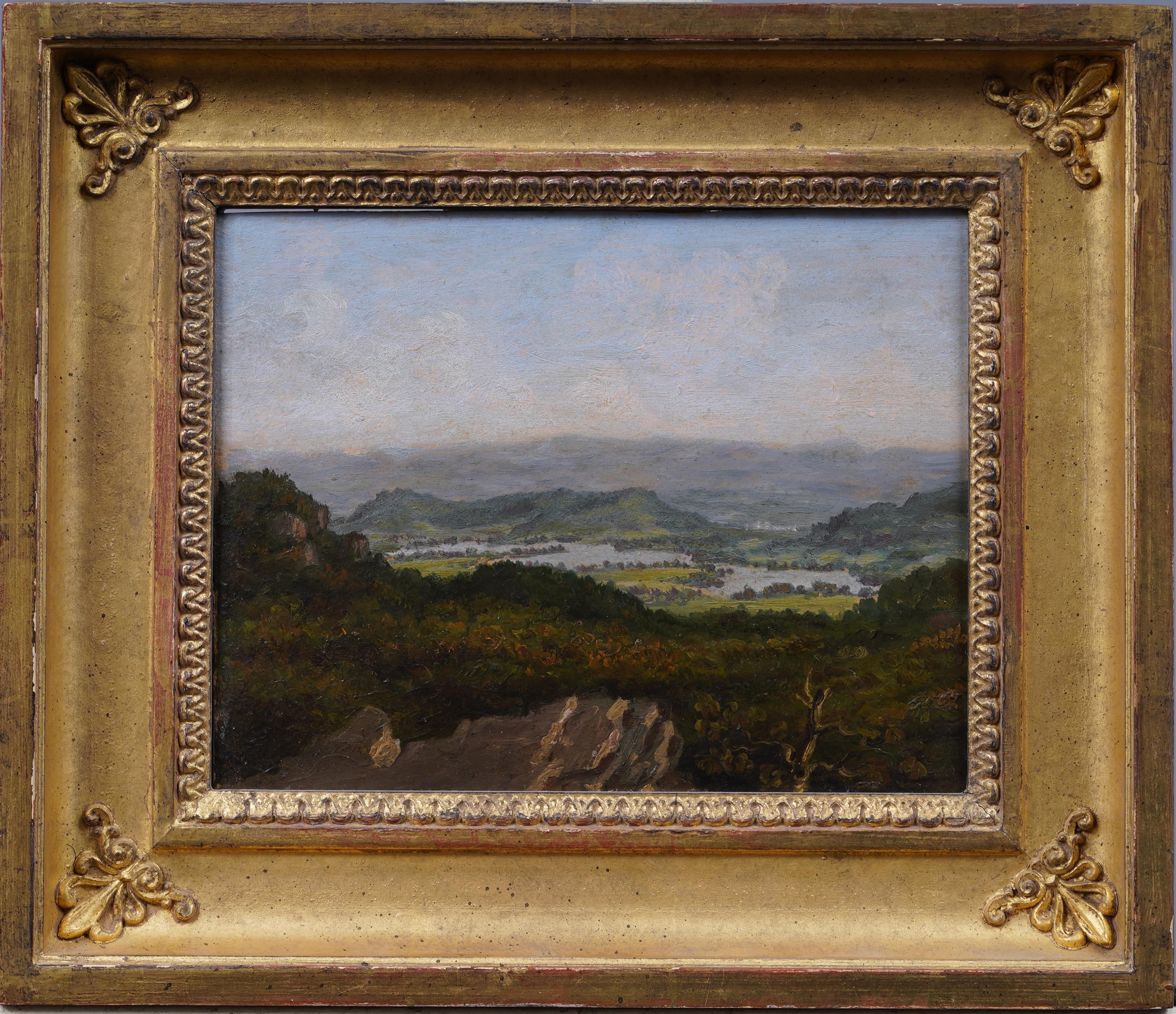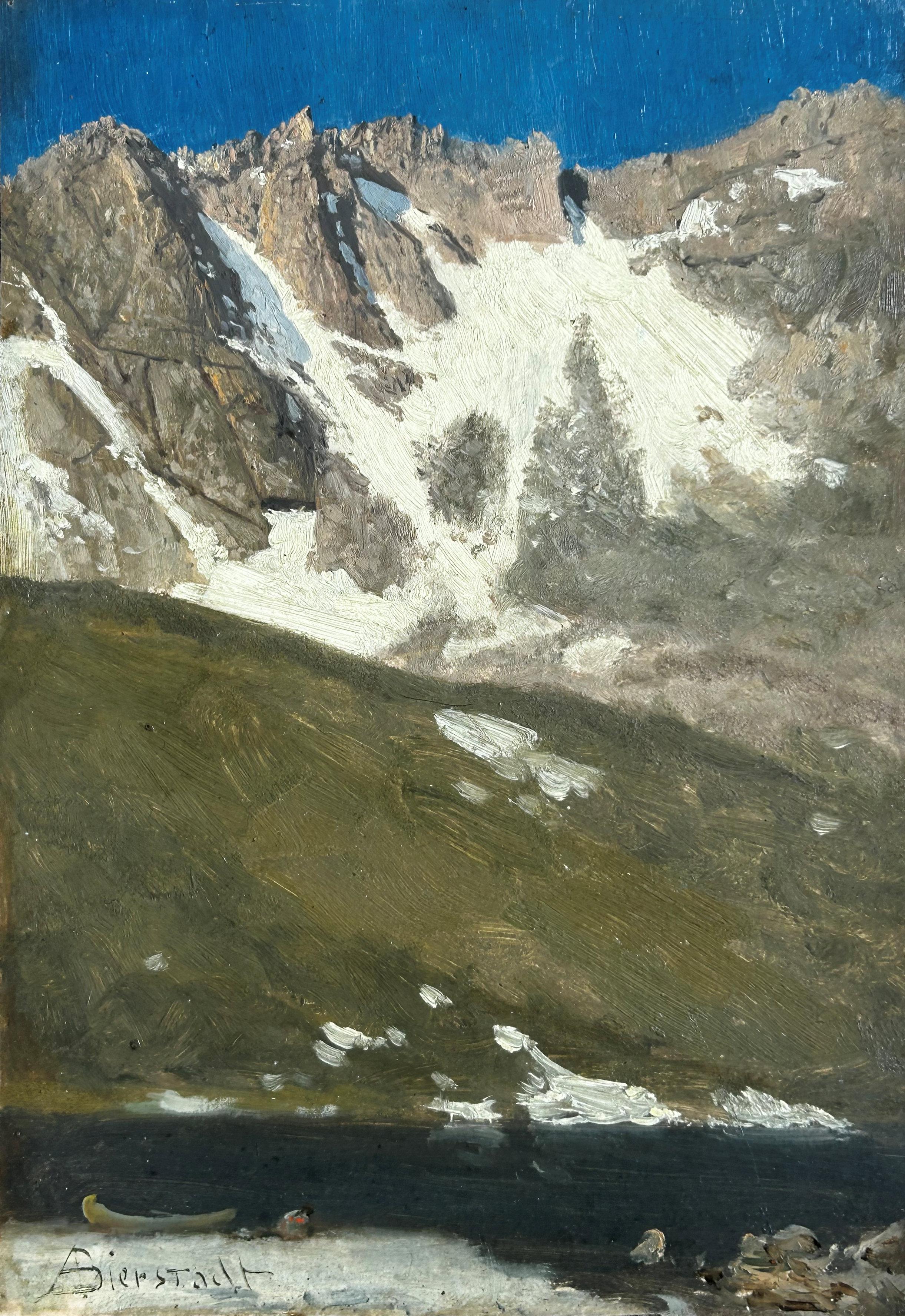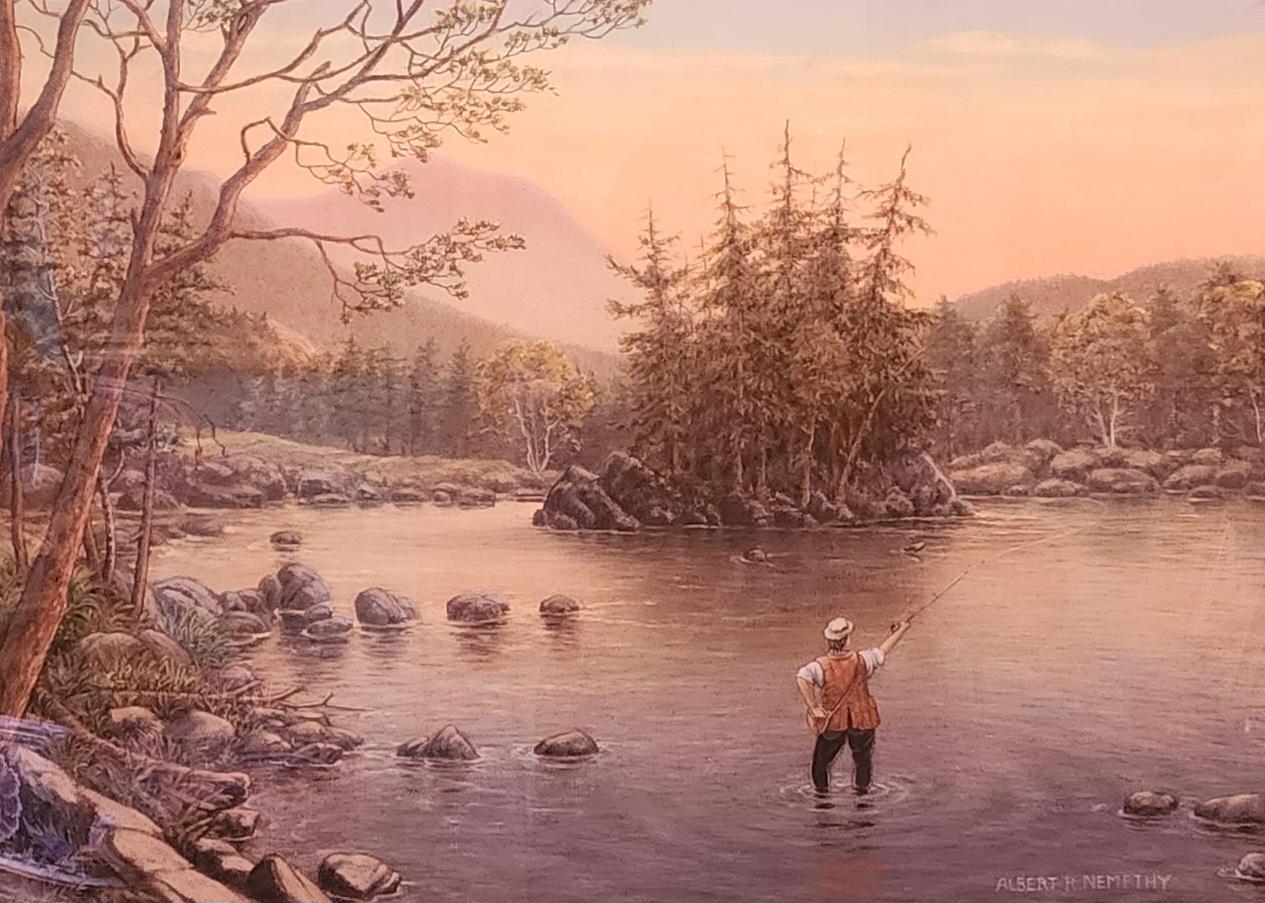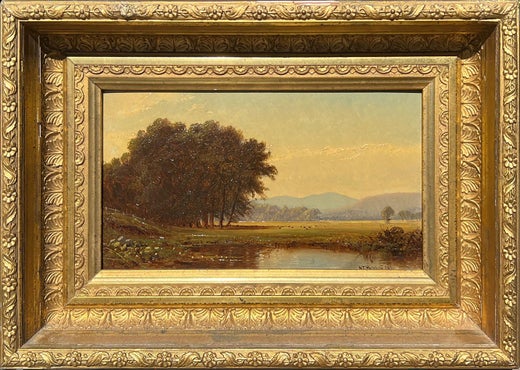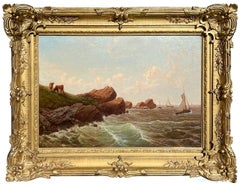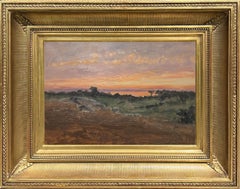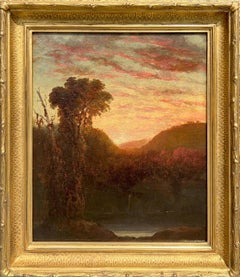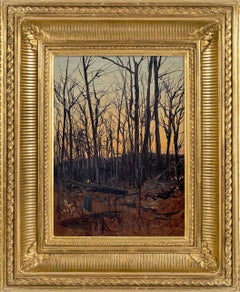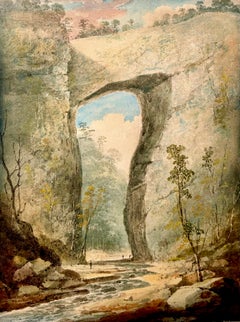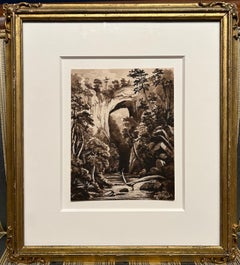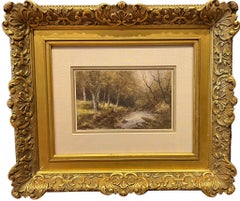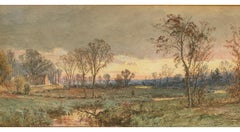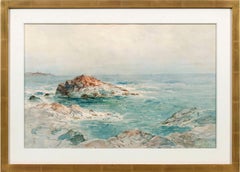
Low Tide, Indian Rock, Narragan by Alfred Thompson Bricher (American: 1837-1908)
View Similar Items
Want more images or videos?
Request additional images or videos from the seller
1 of 7
Alfred Thompson BricherLow Tide, Indian Rock, Narragan by Alfred Thompson Bricher (American: 1837-1908)
About the Item
- Creator:Alfred Thompson Bricher (1837-1908, American)
- Dimensions:Height: 12.5 in (31.75 cm)Width: 19.25 in (48.9 cm)
- Medium:
- Movement & Style:
- Period:
- Condition:
- Gallery Location:New York, NY
- Reference Number:1stDibs: LU2151211382492
Alfred Thompson Bricher
Alfred T. Bricher (1837-1908) Marine and landscape painter Alfred Thompson Bricher is known principally for his oil and watercolor paintings of the New England coastline. He was born in Portsmouth, New Hampshire in 1837, and in 1840 relocated with his family to Newburyport, Massachusetts. Bricher moved to Boston in 1851 to seek employment, and worked as a clerk at a mercantile house while painting part-time. As an artist, Bricher was largely self-taught, but may have studied in Newburyport and at the Lowell Institute in Boston. In 1858 he began painting full-time and established a studio in Newburyport. That year he made the first of many sketching trips–to Mt. Desert Island in Maine with Charles Temple Dix and William S. Haseltine–which, throughout his career, would take him to: Long Island, along the Hudson River, to Lake George and into the Catskill and Adirondack Mountains of New York; to New Jersey; throughout Massachusetts; to Conway, the White Mountains, and elsewhere in New Hampshire; and along the coast of Maine. In 1859 Bricher opened a studio in Boston, though he continued to visit and work in and around Newburyport as well. In June of 1866 he made a sketching trip along the Mississippi River, and into Iowa, Wisconsin and Minnesota. During the 1860s, Bricher collaborated with L. Prang and Company to produce chromolithographs of his paintings. One of the last great Luminist artists, Bricher was described by fellow painter William S. Barrett as “not a studio painter,” but a “lover of true nature.” In 1868, Bricher and his bride, Susan Wildes of Boston moved to New York City. In 1871 the artist began sketching along the coast of Rhode Island. Around 1874 he made his first trip to Grand Manan Island in New Brunswick, Canada. Shortly after this the artist probably traveled to England, for in 1876-77 he began exhibiting English subjects. In 1890 he built a home in New Dorp, Staten Island, New York where he lived until his death in 1908.
About the Seller
5.0
Recognized Seller
These prestigious sellers are industry leaders and represent the highest echelon for item quality and design.
Established in 2004
1stDibs seller since 2022
5 sales on 1stDibs
Authenticity Guarantee
In the unlikely event there’s an issue with an item’s authenticity, contact us within 1 year for a full refund. DetailsMoney-Back Guarantee
If your item is not as described, is damaged in transit, or does not arrive, contact us within 7 days for a full refund. Details24-Hour Cancellation
You have a 24-hour grace period in which to reconsider your purchase, with no questions asked.Vetted Professional Sellers
Our world-class sellers must adhere to strict standards for service and quality, maintaining the integrity of our listings.Price-Match Guarantee
If you find that a seller listed the same item for a lower price elsewhere, we’ll match it.Trusted Global Delivery
Our best-in-class carrier network provides specialized shipping options worldwide, including custom delivery.More From This Seller
View AllCattle by the Sea, c. 1867 by Ann Sophia Towne Darrah (American, 1819-1881)
Located in New York, NY
"Cattle by the Sea," c. 1867 by historic woman artist Ann Sophia Towne Darrah (American, 1819-1881) was exhibited at the Pennsylvania Academy of the Fine Arts in 1867. Painted in oil...
Category
19th Century Hudson River School Landscape Paintings
Materials
Oil, Canvas
New England Sunrise, 1910 by Lockwood DeForest (American, 1850-1932)
Located in New York, NY
"New England Sunrise," 1910 by Hudson River School painter Lockwood DeForest (American, 1850-1932) is oil on artists card-stock and measures 9.75 x 14 inches. The work is signed by DeForest and dated Sept. 17, 1910 at lower left. The work is framed in an elegant, period appropriate frame, and ready to hang.
Lockwood de Forest was born in New York in 1850 to a prominent family. He grew up in Greenwich Village and on Long Island at the family summer estate in Cold Spring Harbor. As was customary for a cultivated family in the Gilded Age, the de Forests made frequent trips abroad. Excursions to the great museums, which were prominent on the de Forests agenda, deepened the young Lockwood's familiarity with European painting and sculpture. Though he had begun drawing and painting somewhat earlier, it was during a visit to Rome in 1868 that nineteen-year-old de Forest first began to study art seriously, taking painting lessons from the Italian landscapist Hermann David Salomon Corrodi (1844–1905). More importantly, on the same trip, Lockwood met one of America’s most celebrated painters, (and his maternal great-
uncle by marriage) Frederic Edwin Church (1826–1900), who quickly became his mentor. DeForest accompanied Church on sketching trips around Italy and continued this practice when they both returned to America in 1869. Early on in his career, de Forest made a habit of recording the date and often the place of his oil sketches, as to create a visual diary of his travels. Lockwood’s profession as a landscape painter can be primarily attributed to Frederic E. Church and his belief in the young artist’s talent.
De Forest often visited Church in the Hudson River community of Catskill where, in addition to sketching trips and afternoons of painting, he assisted with the architectural drawings and planning of Olana. In 1872, de Forest took a studio at the Tenth Street Studio Building in New York. During these formative years de Forest counted among his friend’s artists such as Sanford Robinson Gifford (1823–80), George Henry Yewell (1830–1923), John Frederick Kensett (1816–72), Jervis McEntee (1828–91), and Walter Launt Palmer (1854–1932).
Over the next decade de Forest experienced success as a painter. He exhibited for the first time at the National Academy of Design in 1872, and made two more painting trips abroad, in 1875–76 and 1877–78, traveling to the major continental capitals but also the Middle East and North Africa. His trip to the Middle East and the library at Church’s home, Olana, established his interest in design during his mid-twenties. From about 1878 to 1902, landscape painting was overshadowed by his activities and preoccupation with East Indian architecture and décor, a style that became quite fashionable in late nineteenth century America. From 1879-1883, de Forest founded Associated Artists along with Louis Comfort Tiffany, Candace Wheeler...
Category
Early 20th Century Hudson River School Landscape Paintings
Materials
Oil, Board
Scene in Mohawk Valley, Utica, NY by Lemuel Maynard Wiles (American, 1826-1905)
Located in New York, NY
"Scene in Mohawk Valley, Utica, NY," c. 1860 by Hudson River School painter Lemuel Maynard Wiles (American, 1826-1905) was painted during the Civil War years. Wiles's red striated cl...
Category
19th Century Hudson River School Landscape Paintings
Materials
Oil, Panel
Dusk Forest Scene, Catskills by Lockwood DeForest (American, 1850-1932)
Located in New York, NY
"Dusk Forest Scene, Catskills," 1875 by Hudson River School painter Lockwood DeForest (American, 1850-1932) is oil on artists card-stock and measures 9.5 x 7 inches. The work is signed by DeForest, and dated May 13, 1875 at lower right. The work is framed in an elegant, period appropriate frame, and ready to hang.
Lockwood de Forest was born in New York in 1850 to a prominent family. He grew up in Greenwich Village and on Long Island at the family summer estate in Cold Spring Harbor. As was customary for a cultivated family in the Gilded Age, the de Forests made frequent trips abroad. Excursions to the great museums, which were prominent on the de Forests agenda, deepened the young Lockwood's familiarity with European painting and sculpture. Though he had begun drawing and painting somewhat earlier, it was during a visit to Rome in 1868 that nineteen-year-old de Forest first began to study art seriously, taking painting lessons from the Italian landscapist Hermann David Salomon Corrodi (1844–1905). More importantly, on the same trip, Lockwood met one of America’s most celebrated painters, (and his maternal great-
uncle by marriage) Frederic Edwin Church (1826–1900), who quickly became his mentor. DeForest accompanied Church on sketching trips around Italy and continued this practice when they both returned to America in 1869. Early on in his career, de Forest made a habit of recording the date and often the place of his oil sketches, as to create a visual diary of his travels. Lockwood’s profession as a landscape painter can be primarily attributed to Frederic E. Church and his belief in the young artist’s talent.
De Forest often visited Church in the Hudson River community of Catskill where, in addition to sketching trips and afternoons of painting, he assisted with the architectural drawings and planning of Olana. In 1872, de Forest took a studio at the Tenth Street Studio Building in New York. During these formative years de Forest counted among his friend’s artists such as Sanford Robinson Gifford (1823–80), George Henry Yewell (1830–1923), John Frederick Kensett (1816–72), Jervis McEntee (1828–91), and Walter Launt Palmer (1854–1932).
Over the next decade de Forest experienced success as a painter. He exhibited for the first time at the National Academy of Design in 1872, and made two more painting trips abroad, in 1875–76 and 1877–78, traveling to the major continental capitals but also the Middle East and North Africa. His trip to the Middle East and the library at Church’s home, Olana, established his interest in design during his mid-twenties. From about 1878 to 1902, landscape painting was overshadowed by his activities and preoccupation with East Indian architecture and décor, a style that became quite fashionable in late nineteenth century America. From 1879-1883, de Forest founded Associated Artists along with Louis Comfort Tiffany, Candace Wheeler...
Category
19th Century Hudson River School Landscape Paintings
Materials
Oil, Board
Low Tide, Crab Gathering by Artist William Richardson Tyler (1825-1896)
Located in New York, NY
Painted by Hudson River School artist William Richardson Tyler, "Low Tide, Crab Gathering" is oil on canvas and measures 8 x 13 inches. The painting is signed by Tyler at the lower l...
Category
19th Century Hudson River School Landscape Paintings
Materials
Canvas, Oil
Gray's Inn, Jackson, NH by Historic Woman Artist Anna Freeland (1837-1911)
Located in New York, NY
Painted by Historic Woman Artist Anna Freeland, "Gray's Inn, Iron Mountain and Wildcat River, Jackson, NH" depicts an autumn scene in the White Mountains. Painted in oil on canvas, the work measures 12 x 18 inches and is signed and dated 1891 at the lower left. The work is framed in a period appropriate frame and ready to hang.
Anna C. Freeland (1837-1911) was born in New Hampshire to Mary Ann (Baker) and William Chamberlain. She received her education at the New Hampshire Conference Seminary and Female College in Tilton, New Hampshire. She studied art in Chicago under Walter Shirlaw, at the Académie Julian in Paris under Constant, and in Boston under William A. Rimmer and William M. Hunt.[1] An artist as well as a respected teacher, Freeland was a founder of the Worcester Art Students Club whose members included Joseph H. Greenwood and Frank J. Darrah. Incorporated in 1887, the club held meetings in the homes of its members. The club began holding meetings and exhibitions at the Worcester Art Museum following its opening in 1898.[2]
Freeland offered instruction from her Worcester studio during the Winter months, and for over a decade, spent her summer working in her Jackson, New Hampshire studio.3 Her studio adjoined Gray’s Inn, a lodging establishment popular among artists. While busy executing figurative and floral works, as well as landscape and animal subjects, Freeland continued to teach. In 1886, she instructed a class of lady artists in Jackson.[4] In 1890, Freeland contributed several floral works as well as Portrait of Baby McClure, the infant daughter of an Art Students’ Club member, to the 10th annual exhibition of the club.[5] In 1902, Freeland was the instructor at an outdoor sketch class organized by the Newton Center Woman’s club.[6] In 1910, she exhibited with local artists including Joseph H. Greenwood at the
Worcester Art Museum.[7]
During her lifetime, Freeland exhibited locally and provided art instruction to notable artists including Walter Appleton Clark...
Category
19th Century Hudson River School Landscape Paintings
Materials
Canvas, Oil
You May Also Like
Watercolor Landscape of Natural Bridge, Virginia
By William Guy Wall
Located in Fredericksburg, VA
William Guy Wall, a renowned artist of the early 19th century, is celebrated for his exquisite landscape paintings, and particularly with this watercolor. This painting, titled, "Nat...
Category
Early 19th Century Hudson River School Landscape Paintings
Materials
Paper, Watercolor
Watercolor of Natural Bridge, VA
By Régis François Gignoux
Located in Fredericksburg, VA
Régis Francois Gignoux was a distinguished nineteenth-century artist whose work illuminated the sublime aspects of the American landscape. He was born in Lyon, France and trained at the Academie des Beaux-Arts in Paris, where his instructor, the history painter Paul-Hipployte Delaroche, encouraged his interest in landscape painting. He traveled to the United States in 1840, and immediately showed interest in American Landscapes. He immediately settled in New York and painted many well known sites of the United States: Niagara Falls, the Catskill Mountains, Mount Washington, and Mammoth Cave, Kentucky. He is most famous for his winter scenes, but shows beautiful landscapes year round. Gignoux quickly established himself within the leading Hudson River School circles of the time. He took sketching trips with Frederic Church and John Frederick Kensett. Today, his paintings are in the collections of the Corcoran Gallery of Art, the Museum of Fine Arts, Boston, the Brooklyn Museum of Art, the New York Historical Society, and the Georgia Museum of Art. This beautiful piece comes from the estate of the artist in New Jersey, and Meyer Fine Art...
Category
Mid-19th Century Hudson River School Landscape Paintings
Materials
Paper, Watercolor
Hudson River School Watercolor Titled Fishing the Creek
By David Johnson
Located in Fredericksburg, VA
David Johnson was born in 1827 in New York City. Beginning in 1845, he studied for two years in the antique school of the National Academy of Design. His classmates and colleagues in...
Category
Late 19th Century Hudson River School Landscape Paintings
Materials
Paper, Watercolor
Twilight on the Sawmill River
By Jasper Francis Cropsey
Located in New York, NY
Signed and dated lower right: J.F. Cropsey 1887
Category
19th Century Hudson River School Landscape Paintings
Materials
Paper, Watercolor
1880s Original Hudson River School Landscape -- Sunset Through The Forest
By Charles Russell Loomis
Located in Soquel, CA
Beautiful Hudson River School Original gouache autumnal landscape of vivid sunset through forest by Charles Russell Loomis (American 1857 - 1936), circa 1880. Warm and cool tones wit...
Category
1880s Hudson River School Landscape Paintings
Materials
Paper, Gouache, Cardboard
Sunset Along the Front Range, Colorado, 1900s Traditional Landscape Painting
By Charles Partridge Adams
Located in Denver, CO
This stunning, original signed landscape painting by Charles Partridge Adams (1858-1942) captures the breathtaking beauty of a Colorado sunset along the Front Range, near Denver. The...
Category
Early 20th Century Hudson River School Landscape Drawings and Watercolors
Materials
Watercolor
